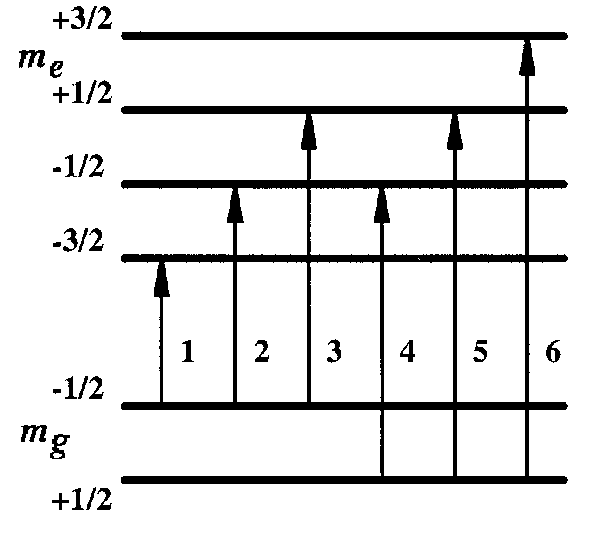 Energy level diagram for 57Fe in a static
magnetic field.
Energy level diagram for 57Fe in a static
magnetic field.
|
By tuning a source to drive a specific transition in the sample, one selected hyperfine level can be populated. When the excited nucleus returns to its ground state, it will emit radiation that can be Mössbauer analysed. |

Top: Transmission spectrum of Fe metal showing the six absorption limes that correspond to the six transitions identified in the level diagram above. Bottom: SEDM spectra obtained while driving lines 1 - 3 (red arrows). |
If the magnetic environment is static (as here in alpha-Fe), then the radiation re-emitted is just that allowed by the selection rules for the populated state. Thus driving line 1 (red arrow) simply yields line 1, while driving lines 2 or 3 yields two lines as there are two allowed transitions from the me = +1/2 and -1/2 states. |
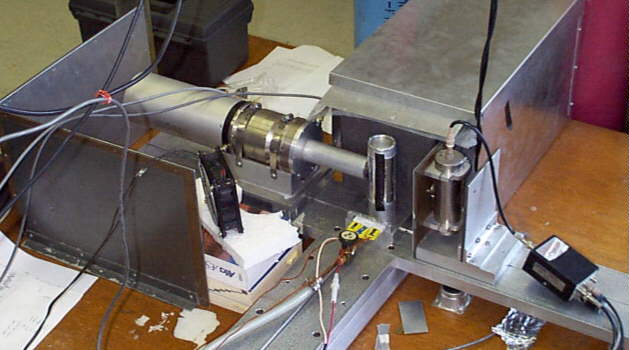

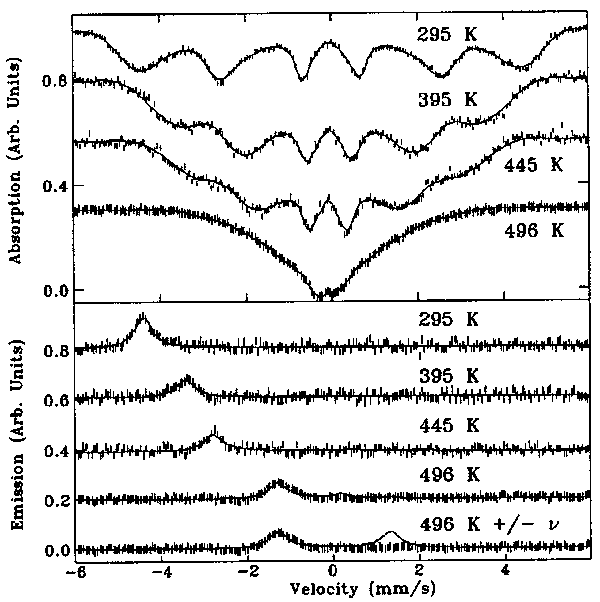

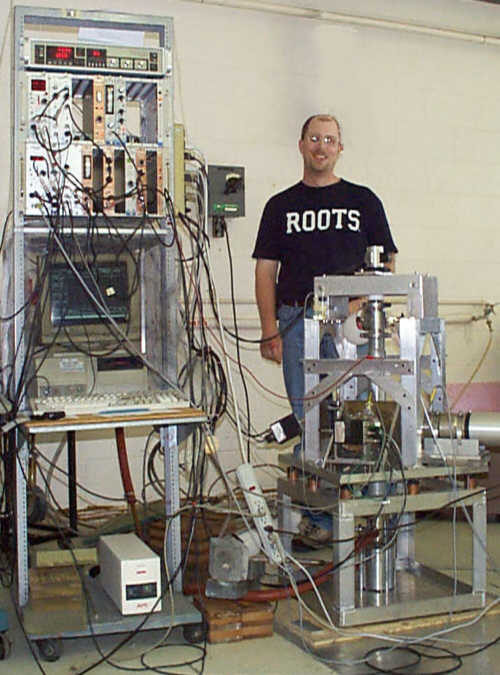

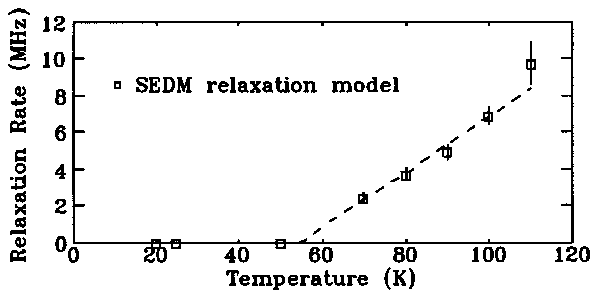 Relaxation rates derived from the SEDM spectra shown above.
Relaxation rates derived from the SEDM spectra shown above.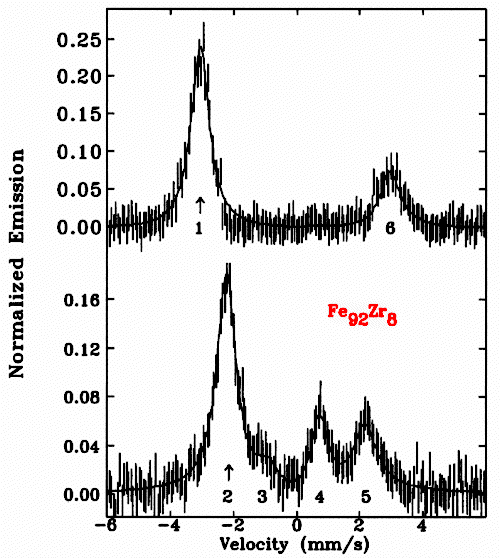
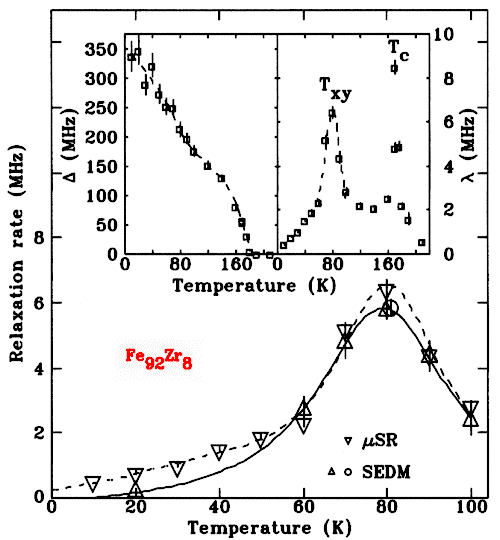
 Back to my homepage..
Back to my homepage..